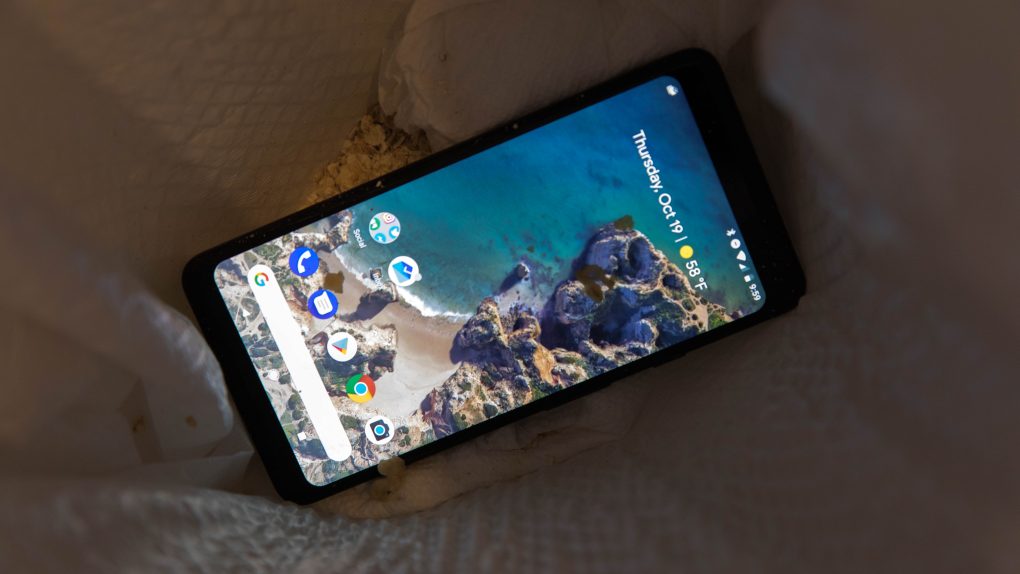Google came under fire for the various display issues affecting the Pixel 2 XL soon after the phone was launched, but the company promised to investigate the various matters and issue fixes. Google looked into the issues as promised, releasing detailed notes on the matter that seem to suggest the displays are perfect. But despite the language the company used in the notes, it’s still going to fix the displays.
What’s remarkable about Google’s response is that all the explanations it provides for the Pixel 2 XL display issues have one major flaw. They do not seem to apply to the Pixel 2, which also has an OLED display that’s not affected by the same issues. At least, nobody is complaining about the Pixel 2, which is something Google doesn’t address.
In a forum post, Google’s VP of hardware, Mario Queiroz, acknowledged the reports detailing the Pixel 2 XL screen issues, saying that Google takes the reports “very seriously,” and that’s why it wants to issue an update on the matter.
When it comes to color accuracy on the Pixel 2 XL, Queiroz said that Google wanted to offer users a more “natural and accurate rendition of colors” and the Pixel 2 phones already include an option to boost colors by 10%. However, Google will add a new mode for more saturated colors to fix the display via a software update.
As for the screen burn-in (or differential aging), Google says that it’s “in line with that of other premium smartphones and should not affect the normal, day-to-day user experience of the Pixel 2 XL.” Even so, Google will make adjustments via software to prevent burn-in issues.
Queiroz also said that Google is extending the warranty for both phones to two years, and pointed readers to this detailed post that explains the Pixel 2 XL screen problems. Google’s Seang Chau explained in greater detail the Pixel 2 XL display problems and fixes, providing more details than Queiroz did.
Chau says that “our investigation so far has given us confidence that our displays are as great as we hoped they would be, though we’re also taking steps to address the concerns we’ve heard.” So the display is fine, but you don’t like it, which means we’re going to fix it. That seems to be Google’s conclusion.
The poor display experience has been attributed to Google’s decision to “calibrate the Pixel 2 XL for delivering natural, accurate colors, taking advantage of the new color management support in Android 8.0 Oreo.” Chau also said that Google will provide software fixes to allow users to experience more vibrant colors.
When it comes to burn-in, the Pixel 2 XL tests showed that “its decay characteristics are comparable to OLED panels used in other premium smartphones.” That’s great and all, but reviewers experienced serious issues after one week of usage. Google has a fix for the matter:
We’re currently testing a software update that further enhances protections against this issue by adding a new fade-out of the navigation bar buttons at the bottom of the Pixel screen after a short period of inactivity. In addition, we’re working with more apps to use a light navigation bar to match their app’s color scheme. The update will also reduce the maximum brightness of the Pixel 2 XL by a virtually imperceptible 50 cd/m2 (nits), thereby significantly reducing load on the screen with an almost undetectable change in the observed brightness.
What about the blue tint that some Pixel 2 XL owners have been complaining about? Well, apparently you’ve just been holding it wrong this whole time, which is quite an impressive way to shift the blame:
We want to add some info regarding the blue tint that some of you have been asking about. The slight blue tint is inherent in the display hardware and only visible when you hold the screen at a sharp angle. All displays are susceptible to some level of color shift (e.g. red, yellow, blue) when viewing from off angles due to the pixel cavity design. Similar to our choice with a cooler white point, we went with what users tend to prefer and chose a design that shifts blue.
What Google doesn’t explain is why the Pixel 2 doesn’t suffer from the same problems. The phone also packs an OLED screen, so it should experience the same exact color and burn-in issues. Instead, Google insists that the Pixel 2 XL display is fine. But it’ll still fix it and extend the phone’s warranty.
Is this Google’s way of admitting the Pixel 2 XL display is inferior to the Pixel 2?








